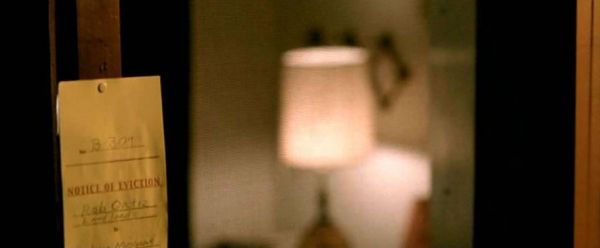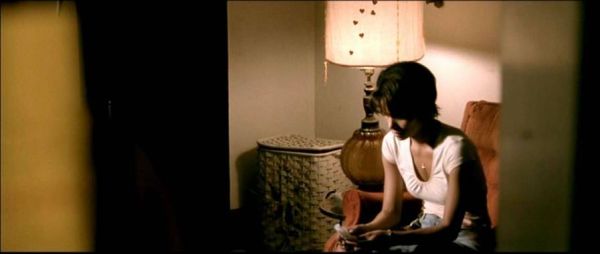Difference between pages "TCF340/BordwellThompson/Narrative Form (Discussion)" and "TCF440540/BordwellThompson/Cinematography (Discussion)"
From Screenpedia
(Difference between pages)
Jump to navigationJump to searchScreenAdmin (talk | contribs) m (8 revisions imported) |
|||
| Line 1: | Line 1: | ||
| − | + | #'''Group 3:''' What is depth of field? | |
| − | # | + | #*Define these terms and provides examples of when these techniques might be used: |
| − | # | + | #**Shallow focus |
| − | ## | + | #**Deep focus |
| − | ## | + | #**Pulling focus (What's another name for it?) |
| − | ## | + | #'''Group 4:''' What is focal length? |
| − | # | + | #*Define these focal-length terms and provides examples of when these techniques might be used: |
| − | + | #**Wide angle | |
| − | + | #**Telephoto | |
| + | #**''Variable'' focal length lens (what's another, more common name for it?) | ||
| + | #'''Group 1:''' What is aspect ratio? | ||
| + | #*Define these terms | ||
| + | #**Academy Ratio: 1.33 : 1 or 4 : 3 | ||
| + | #**Widescreen | ||
| + | #***Anamorphic 2.35 or 2.4 : 1 | ||
| + | #***Masked 1.85 : 1 | ||
| + | #***TV widescreen: 16 : 9 or 1.78 : 1 | ||
| + | #*What are the aspect ratios of ''Ordinary People'', ''Shakespeare in Love'' and ''Monster's Ball''? | ||
| + | #'''Group 2:''' What do B/T mean by the "mobile frame"? | ||
| + | #*Explain the differences among these types of mobile frames and provides examples of when these techniques are used in [http://www.tcf.ua.edu/EO/DV/FilmArt/ShakespeareInLove.htm the ''Shakespeare in Love'' clip]: | ||
| + | #**Pan | ||
| + | #**Tilt | ||
| + | #**Handheld | ||
| + | #**Tracking or dolly shot | ||
| + | #*Explain the difference between a tracking/dolly shot and a zoom. | ||
| − | + | ==Cinematography and narrative== | |
| + | '''All groups:''' | ||
| − | + | In the [http://www.tcf.ua.edu/EO/DV/FilmArt/MonstersBall.htm ''Monster's Ball'' scene we viewed], what narrative functions does the cinematography serve? List three of them. Be sure to consider deep/shallow focus, focus shifts and framing in the third shot. | |
| − | + | [[Image:MonstersBall01.jpg|thumb|left|600px|Shot three from the ''Monster's Ball'' scene begins.]] | |
| − | + | <br clear="all"> | |
| − | + | [[Image:MonstersBall02.jpg|thumb|left|600px|Shot three from the ''Monster's Ball'' scene continues.]] | |
| − | + | <br clear="all"> | |
| − | |||
| − | |||
| − | |||
| − | = | ||
| − | |||
| − | |||
| − | |||
| − | = | ||
| − | |||
| − | |||
| − | |||
| − | |||
| − | |||
| − | |||
| − | |||
| − | |||
== Bibliography == | == Bibliography == | ||
| − | #David Bordwell and Kristin Thompson, ''Film Art: An Introduction'', | + | #David Bordwell and Kristin Thompson, ''Film Art: An Introduction'', 9th ed. (New York: McGraw-Hill, 2010). |
==External links== | ==External links== | ||
| − | #[http://www.tcf.ua.edu/Classes/Jbutler/ | + | #[http://www.tcf.ua.edu/Classes/Jbutler/T440/VisualStyleIllustrations02.htm Cinematography illustrations] |
| − | #[http://www.tcf.ua.edu/ | + | #[http://www.tcf.ua.edu/Classes/Jbutler/T440/MonstersBall/index.htm ''Monster's Ball'' frame grabs] |
| − | [[Category: | + | [[Category:TCF440/540 Discussion]] |
Latest revision as of 21:31, 14 August 2019
- Group 3: What is depth of field?
- Define these terms and provides examples of when these techniques might be used:
- Shallow focus
- Deep focus
- Pulling focus (What's another name for it?)
- Define these terms and provides examples of when these techniques might be used:
- Group 4: What is focal length?
- Define these focal-length terms and provides examples of when these techniques might be used:
- Wide angle
- Telephoto
- Variable focal length lens (what's another, more common name for it?)
- Define these focal-length terms and provides examples of when these techniques might be used:
- Group 1: What is aspect ratio?
- Define these terms
- Academy Ratio: 1.33 : 1 or 4 : 3
- Widescreen
- Anamorphic 2.35 or 2.4 : 1
- Masked 1.85 : 1
- TV widescreen: 16 : 9 or 1.78 : 1
- What are the aspect ratios of Ordinary People, Shakespeare in Love and Monster's Ball?
- Define these terms
- Group 2: What do B/T mean by the "mobile frame"?
- Explain the differences among these types of mobile frames and provides examples of when these techniques are used in the Shakespeare in Love clip:
- Pan
- Tilt
- Handheld
- Tracking or dolly shot
- Explain the difference between a tracking/dolly shot and a zoom.
- Explain the differences among these types of mobile frames and provides examples of when these techniques are used in the Shakespeare in Love clip:
Cinematography and narrative
All groups:
In the Monster's Ball scene we viewed, what narrative functions does the cinematography serve? List three of them. Be sure to consider deep/shallow focus, focus shifts and framing in the third shot.
Bibliography
- David Bordwell and Kristin Thompson, Film Art: An Introduction, 9th ed. (New York: McGraw-Hill, 2010).

